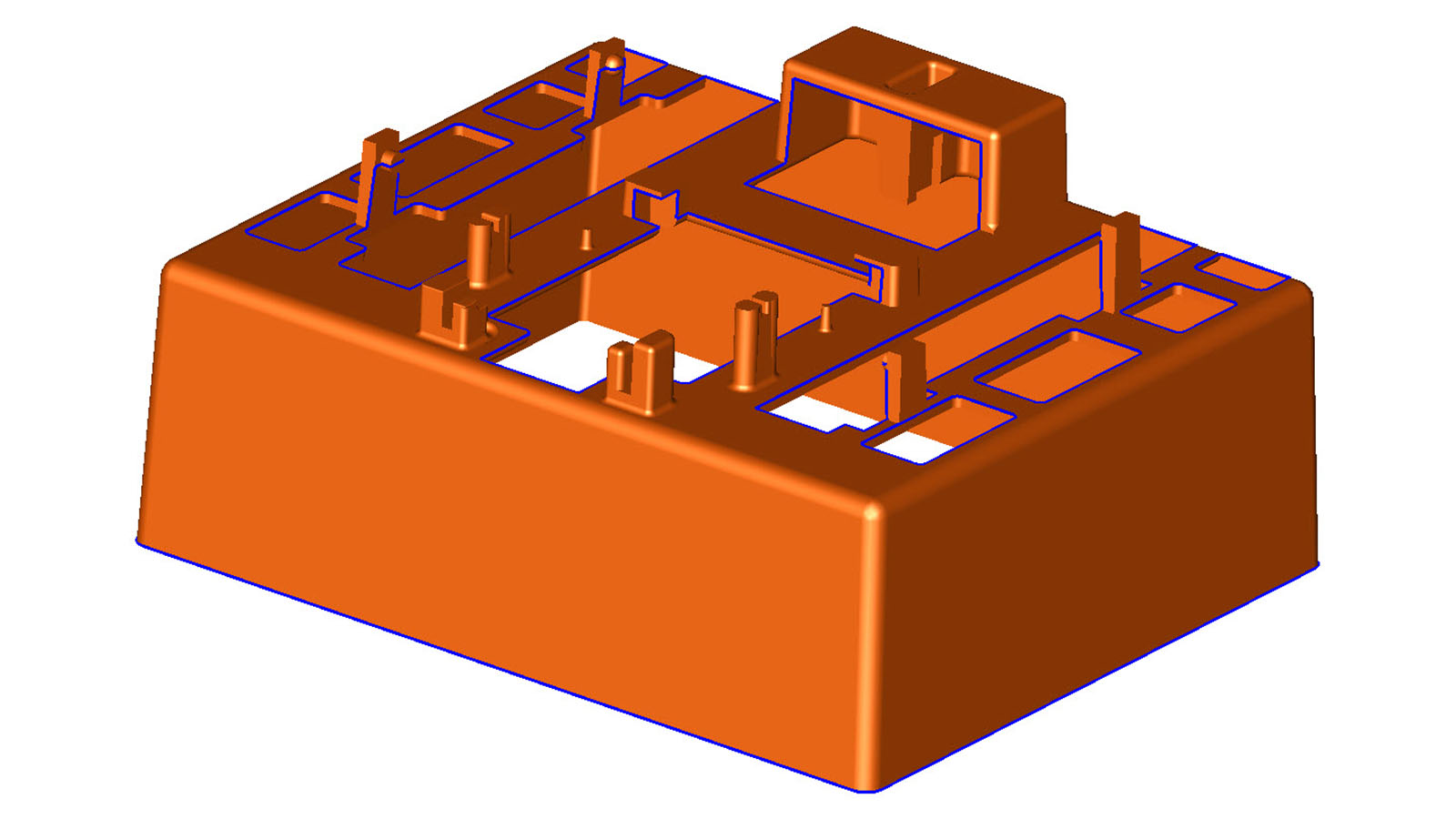One of the first considerations when designing a mold is selecting the parting line. Because the mold is divided into two halves, we need to decide where on the part one half of the mold will meet the other. For some applications, there’s an obvious choice, but in others, the the best option may not be so clear. We’re going to look at what to consider when selecting a parting line and what it means for part design.
We start off deciding which direction the mold will open relative to the molded part. This is known as the “line of draw” and will be a determining factor for how the rest of the mold is designed. When looking at a 3d model of a part, we’re looking at the potential need for actions like lifters and cams. In general, we only want to use the features if they are necessary. For more complicated part designs where cams and undercut’s cannot be avoided, we are deciding which part of the component will be machined into the tooling face and which should be a part of the action.
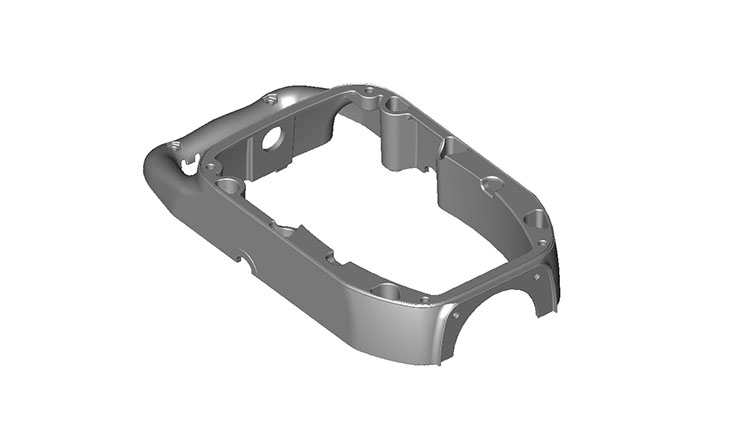
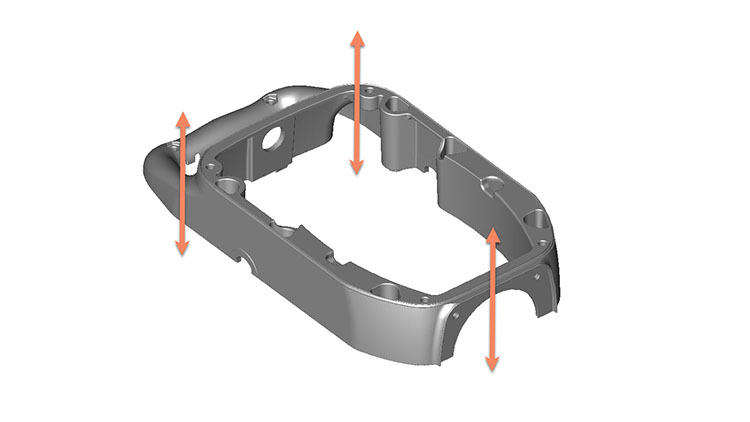
Looking closer at the model, there are three holes perpendicular to the line of draw. These are indicated in the image below.
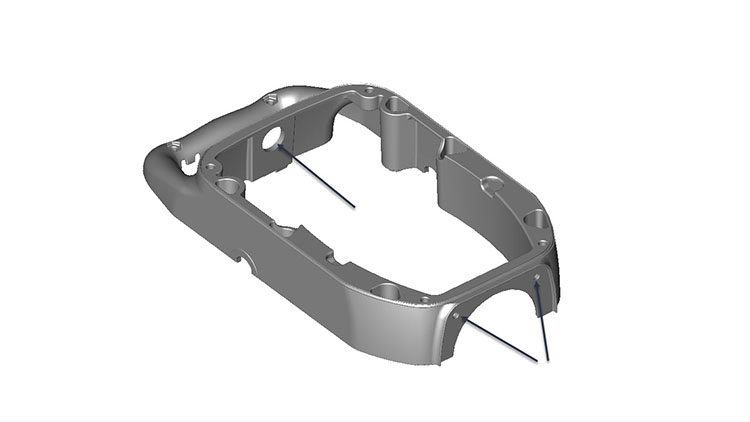
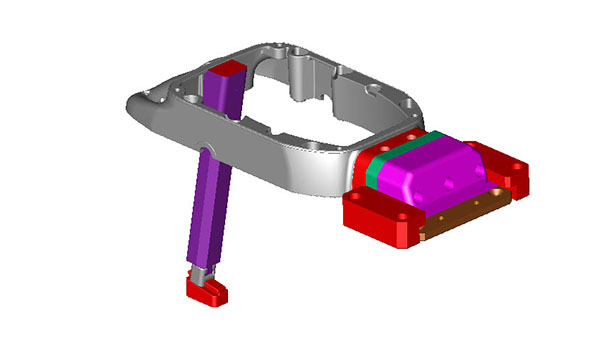
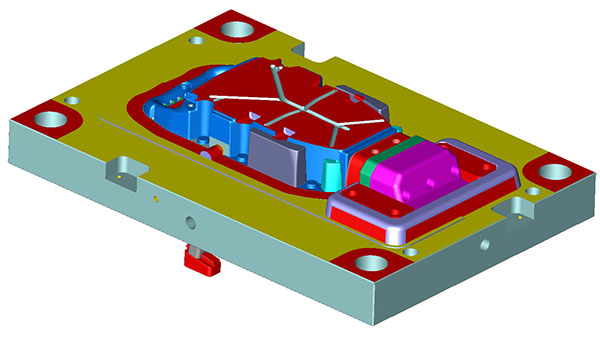
Another consideration when selecting a parting line is what components are designed into a particular side of the mold. Since plastic shrinks as it cools, it will shrink onto surfaces. This is good and bad for designers and molders. We will use the shrinking to make sure the part stays on one side of the mold as it opens. At the same time, allowing the plastic to stick and shrink too hard will make the part eject hard or get stuck in the mold.
To combat this, we will draft or angle the walls of the molded part away from the parting line. The more draft we design into the part, the easier the part will be removed. More importantly, though, we want to make sure that the part is shrinking onto one side of the mold and away from the other. As you’d expect, this isn’t always cut and dry, but the trick is to have more features to shrink onto one side (possibly with less draft) than the other. We can also promote this using textures (or a lack of texture).
As mentioned earlier, molds are divided into an A and B half. The A half is going to be a show surface and will usually have a higher quality surface finish. The B-side is the opposite, where surface finish does not matter as much, and there may be marks from knockout pins. In part designs that lack significant features for pulling the part towards the B-side of the mold, we may be able to use a rougher surface finish.
Like many custom molding applications, the part and mold design are not always simple. The parting line is a simple concept but can be much more complicated to design and produce. Taking into consideration design features like cams and lifters can further complicate this. Once we’ve decided on the best parting line, there may be part design modifications required to allow for proper draft and surface finish to make the mold functions properly.
This post is part of our Designing for Injection Molding series. Check out more here.

